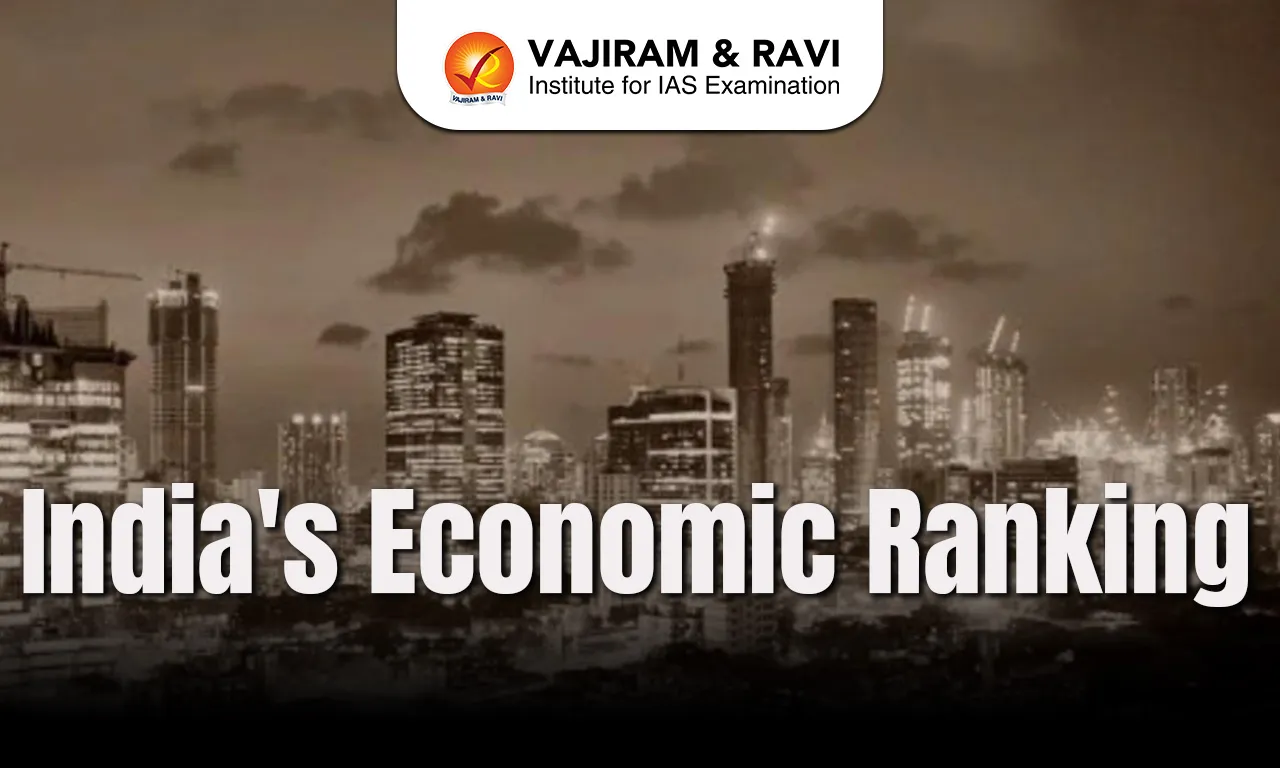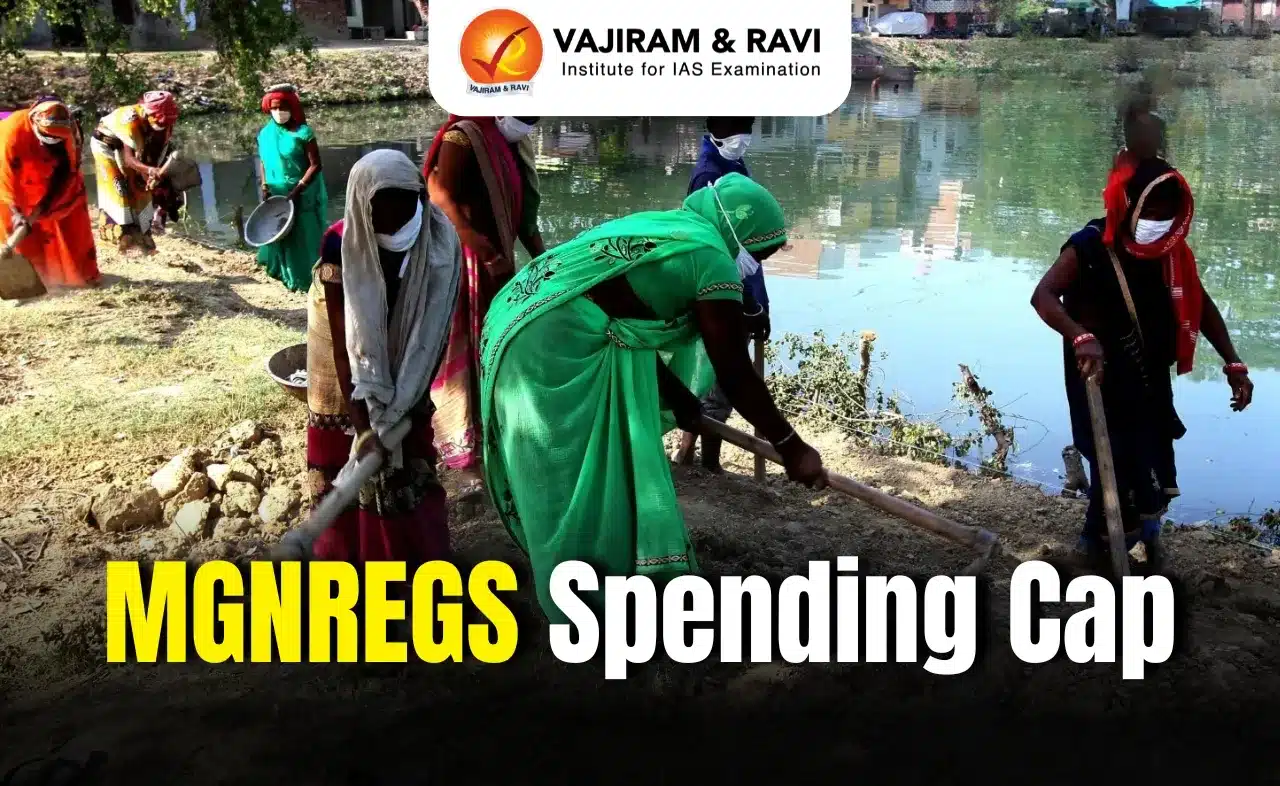India’s Economic Ranking Latest News
- NITI Aayog CEO BVR Subrahmanyam recently claimed that India has overtaken Japan to become the world’s fourth-largest economy, citing IMF data.
- This claim was met with both celebration and skepticism, with some insisting IMF data still places India fifth.
India’s Economic Ranking – Data, Debate, and Context
- NITI Aayog CEO recently claimed India is now the fourth-largest economy, overtaking Japan.
A More Surprising Claim: India Is Third
- Based on IMF data, another claim emerges — India has actually been the third-largest economy in the world since 2009, when it overtook Japan, during the govt under PM Manmohan Singh.
Evidence

- The above figure displays India’s GDP trajectory (dark green line) clearly separating from others in 2009.
- It also marks another pivotal shift in 2016, when China overtook the US to become the largest economy.
Understanding Economic Rankings Through Nominal GDP and Purchasing Power
- Cost of Living vs. Nominal Income
- Two individuals earning similar salaries may not enjoy the same quality of life if one lives in a high-cost city like Mumbai and the other in a lower-cost city like Patna.
- This difference is due to the cost of living, which affects purchasing power and not just nominal income.
- Nominal GDP
- Nominal GDP is the total market value of all goods and services produced in a country, measured using current prices and converted into US dollars.
- This is the metric currently being used to claim India has overtaken Japan.
- Problems with Nominal GDP Comparisons
- Exchange Rate Sensitivity: Changes in the rupee-dollar or yen-dollar exchange rate can alter rankings without actual changes in economic output.
- Data Revisions: India’s GDP figures often undergo revisions, making real-time comparisons less reliable.
- Lack of Cost Context: Nominal GDP ignores purchasing power and cost of living, which are essential for assessing real economic well-being.
- India’s Current Position
- As per IMF data, India overtook the UK post-COVID in nominal GDP.
- However, it is still behind Japan and Germany as of the end of 2024. IMF projections show India overtaking both soon.
- Why Purchasing Power Parity (PPP) Matters
- Unlike nominal GDP, GDP by Purchasing Power Parity (PPP) adjusts for cost-of-living differences across countries.
- It provides a more accurate comparison of what people can actually buy with their incomes — making it a more meaningful metric of economic strength.
- While nominal GDP rankings create headlines, PPP-based GDP offers a more realistic picture of a nation’s economic capacity and the standard of living of its citizens.
Understanding Purchasing Power Parity (PPP)
- PPP is a method used to compare the economic productivity and standards of living between countries by accounting for the relative cost of living and inflation rates.
- It tells us how much actual goods and services one can buy in a country with its income, instead of relying on exchange rates alone.
India’s Global Ranking by PPP
- According to PPP-based GDP estimates, India became the third-largest economy in the world as early as 2009, not just recently — a fact often overlooked in public discussions.
- PPP gives a truer picture of a country’s economic strength by adjusting for what money can actually buy. In PPP terms, India has been among the top economies for over a decade.
The Politics Behind GDP Rankings
- India has made significant progress in nominal GDP terms, growing at an average rate of 6% to 7% since 2004.
- This growth has helped India surpass major global economies in dollar-based rankings.
Why Governments Prefer Nominal Rankings
- Governments often highlight nominal GDP milestones because:
- They’re easier to communicate.
- They show recent progress.
- They help claim political credit.
Why PPP-Based Rankings Are Ignored
- Even though India became the third-largest economy by PPP in 2009, this ranking has remained unchanged.
- Since the relative position hasn’t shifted, PPP metrics offer no fresh political advantage.
- Hence, they are rarely mentioned in political discourse, despite offering a truer economic picture.
The Limits of Aggregate GDP Rankings – Why Per Capita Matters
- Since 2021, India’s nominal GDP has been higher than the UK’s in total terms. This is often used to highlight India’s economic rise on the global stage.
Per Capita GDP Tells a Different Story
- Despite India’s higher total GDP:
- In 2021, UK’s per capita GDP was $46,115 vs. India’s $2,250.
- By 2025, UK’s per capita GDP will be $54,949, while India’s will only be $2,879.
- UK’s per capita GDP remains nearly 19 times higher than India’s.
Why Per Capita Metrics Matter More
- While aggregate GDP rankings can fuel national pride, they hide the reality of low average incomes and purchasing power.
- Such rankings often divert attention from core challenges such as Poverty; Low productivity and Unequal development.
India’s Economic Ranking FAQs
Q1. Has India overtaken Japan in GDP ranking?
Ans. Nominally close, but IMF data shows India is still fifth; PPP ranks India third since 2009.
Q2. What is nominal GDP?
Ans. Nominal GDP measures a country’s total output using current prices, often influenced by currency exchange fluctuations.
Q3. Why is PPP more accurate than nominal GDP?
Ans. PPP adjusts for cost of living, reflecting true purchasing power and living standards across different economies.
Q4. How does India compare per capita with the UK?
Ans. India’s per capita GDP is 19 times lower than the UK’s, despite having higher total nominal GDP.
Q5. Why do politicians prefer nominal GDP figures?
Ans. Nominal GDP rankings are easier to promote politically and show recent progress, unlike stable PPP rankings.
Last updated on June, 2025
→ UPSC Notification 2025 was released on 22nd January 2025.
→ UPSC Prelims Result 2025 is out now for the CSE held on 25 May 2025.
→ UPSC Prelims Question Paper 2025 and Unofficial Prelims Answer Key 2025 are available now.
→ UPSC Calendar 2026 is released on 15th May, 2025.
→ The UPSC Vacancy 2025 were released 1129, out of which 979 were for UPSC CSE and remaining 150 are for UPSC IFoS.
→ UPSC Mains 2025 will be conducted on 22nd August 2025.
→ UPSC Prelims 2026 will be conducted on 24th May, 2026 & UPSC Mains 2026 will be conducted on 21st August 2026.
→ The UPSC Selection Process is of 3 stages-Prelims, Mains and Interview.
→ UPSC Result 2024 is released with latest UPSC Marksheet 2024. Check Now!
→ UPSC Toppers List 2024 is released now. Shakti Dubey is UPSC AIR 1 2024 Topper.
→ Also check Best IAS Coaching in Delhi
Tags: india's economic ranking mains articles upsc current affairs upsc mains current affairs





















